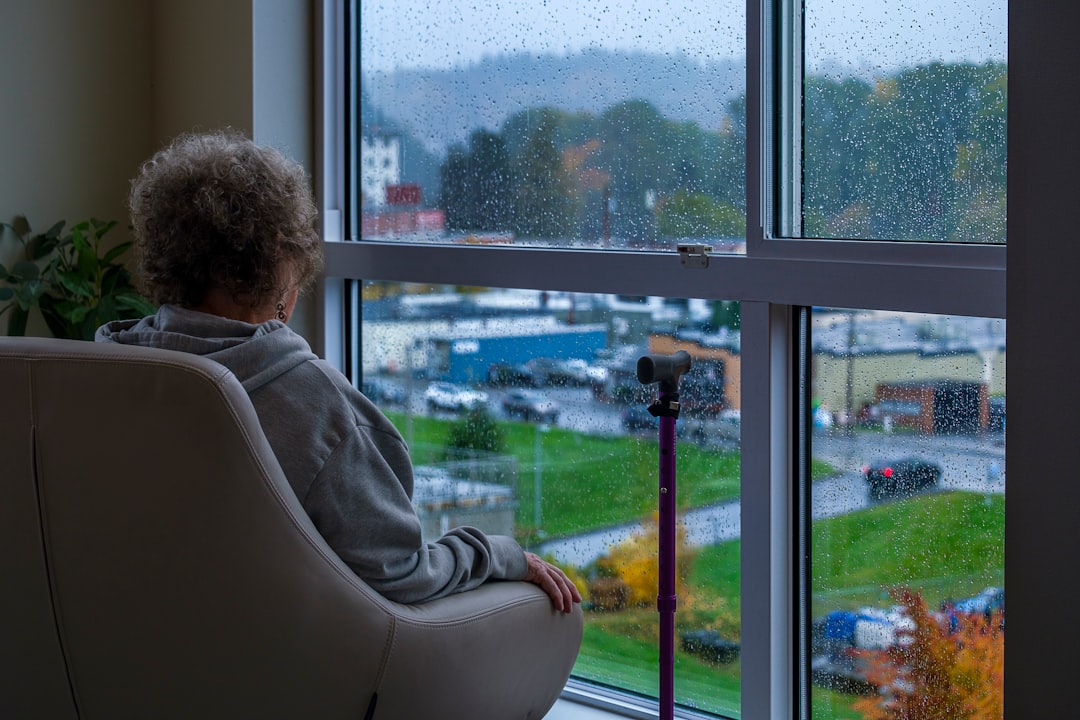When you think about nursing homes, the quality of care provided can significantly impact the lives of residents and their families. High-quality nursing homes not only ensure that residents receive the medical attention they need but also foster an environment that promotes dignity, respect, and emotional well-being. As you consider the options available for your loved ones, understanding the importance of nursing home quality becomes paramount.
It is not just about meeting basic needs; it is about enhancing the overall quality of life for those who reside there. Quality nursing homes can make a profound difference in the health outcomes of their residents. Research has shown that facilities with higher quality ratings tend to have better health outcomes, lower rates of hospitalizations, and improved resident satisfaction.
When you prioritize quality in nursing home selection, you are investing in a safer, more supportive environment for your loved ones. This choice can lead to a more fulfilling life for residents, where they can engage in social activities, receive personalized care, and maintain their independence as much as possible.
Key Takeaways
- Nursing home quality significantly impacts resident safety, satisfaction, and overall well-being.
- Adequate staffing ratios are crucial for delivering high-quality care and reducing adverse events.
- Infection control and medication management are key areas requiring strict oversight to prevent harm.
- Resident satisfaction and quality of life depend on personalized care, nutrition, and a safe environment.
- Continuous staff training and adherence to regulations are essential strategies for improving nursing home quality.
Key Statistics on Nursing Home Quality
Understanding the statistics surrounding nursing home quality can provide you with valuable insights into what to expect from these facilities. For instance, studies indicate that approximately 1.4 million individuals reside in nursing homes across the United States. Among these, only about 30% of nursing homes receive a five-star rating from the Centers for Medicare & Medicaid Services (CMS), which is a clear indicator of high-quality care.
As you navigate the options available, these statistics can serve as a benchmark for evaluating potential facilities. Moreover, the data reveals that nursing homes with higher ratings often have better staffing levels and more comprehensive training programs for their employees. This correlation suggests that when you choose a facility with a strong reputation for quality, you are likely to find a more dedicated and well-trained staff.
Additionally, facilities that prioritize quality care tend to have lower rates of adverse events, such as falls and medication errors, which can significantly affect residents’ health and well-being.
Staffing Ratios and Quality of Care

One of the most critical factors influencing nursing home quality is staffing ratios. When you consider a nursing home for your loved one, it is essential to inquire about the number of staff members available per resident. Research consistently shows that higher staffing ratios correlate with better quality of care.
Facilities that maintain adequate staffing levels are better equipped to provide personalized attention and timely medical interventions, which can lead to improved health outcomes for residents. Inadequate staffing can result in rushed care and increased stress for both residents and caregivers. When staff members are stretched too thin, they may struggle to meet the individual needs of each resident, leading to feelings of neglect or frustration.
By choosing a nursing home with favorable staffing ratios, you are ensuring that your loved one will receive the attention and care they deserve, ultimately enhancing their overall experience and quality of life.
Resident Satisfaction and Quality of Life
| Metric | Description | Measurement Method | Typical Range | Importance |
|---|---|---|---|---|
| Overall Satisfaction Score | Residents’ general satisfaction with their living environment | Survey with Likert scale (1-5 or 1-10) | 3.5 – 4.8 (out of 5) | High |
| Sense of Safety | Residents’ perception of safety within the community | Survey questions on safety perception | 70% – 95% positive responses | High |
| Access to Amenities | Availability and convenience of local amenities (parks, shops, healthcare) | Resident feedback and proximity analysis | 80% – 100% access within 10 minutes | Medium |
| Social Interaction | Frequency and quality of social interactions among residents | Survey and community event participation rates | 60% – 85% report regular interaction | Medium |
| Noise Levels | Resident perception of noise pollution in the area | Survey and decibel measurements | Below 55 dB preferred | Medium |
| Cleanliness | Residents’ satisfaction with cleanliness of public spaces | Survey and visual inspections | 85% – 95% satisfaction | High |
| Green Space Availability | Amount of accessible green space per resident | GIS mapping and resident feedback | Minimum 9 m² per resident | High |
| Health and Well-being | Self-reported physical and mental health status | Health surveys and interviews | 70% – 90% report good or excellent health | High |
Resident satisfaction is a crucial component of nursing home quality that often goes hand in hand with overall quality of life. When you evaluate potential facilities, consider how they prioritize resident feedback and engagement. High levels of satisfaction among residents typically indicate a supportive environment where individuals feel valued and respected.
This sense of belonging can significantly impact their mental and emotional well-being. Quality of life in nursing homes encompasses various factors, including social interactions, recreational activities, and opportunities for personal autonomy. You should look for facilities that offer a range of activities tailored to residents’ interests and abilities.
Engaging in social activities not only combats feelings of loneliness but also promotes cognitive function and physical health. By choosing a nursing home that prioritizes resident satisfaction and quality of life, you are making a choice that can lead to happier, healthier living conditions for your loved one.
Rates of Falls and Injuries in Nursing Homes
Falls and injuries are significant concerns in nursing homes, often leading to severe consequences for residents. As you assess potential facilities, it is essential to inquire about their rates of falls and injuries. High-quality nursing homes implement comprehensive fall prevention programs that include regular assessments of residents’ mobility and safety needs.
These programs are designed to minimize risks and ensure that residents can navigate their environment safely. In addition to fall prevention strategies, effective communication among staff members plays a vital role in reducing injury rates. When caregivers are well-informed about each resident’s specific needs and limitations, they can take proactive measures to prevent accidents.
By choosing a nursing home with a strong focus on safety protocols and fall prevention initiatives, you are prioritizing your loved one’s well-being and reducing the likelihood of serious injuries.
Medication Errors and Adverse Events

Medication management is another critical aspect of nursing home quality that directly impacts residents’ health outcomes. Medication errors can lead to adverse events that may compromise the well-being of individuals receiving care. As you evaluate nursing homes, it is essential to inquire about their medication management practices and error rates.
Facilities with robust systems in place for medication administration tend to have lower rates of errors, ensuring that residents receive the correct medications at the right times. Moreover, effective communication between healthcare providers and residents is crucial in preventing medication-related issues. High-quality nursing homes often prioritize staff training on medication management protocols and encourage open dialogue with residents about their medications.
By selecting a facility that emphasizes safe medication practices, you are taking an important step toward safeguarding your loved one’s health and minimizing the risk of adverse events.
Infection Control and Prevention in Nursing Homes
Infection control is a critical concern in nursing homes, particularly given the vulnerability of many residents due to age or underlying health conditions. As you consider potential facilities, it is essential to assess their infection control policies and practices. High-quality nursing homes implement rigorous infection prevention protocols designed to minimize the risk of outbreaks and protect residents’ health.
Effective infection control measures include regular staff training on hygiene practices, proper use of personal protective equipment (PPE), and routine cleaning protocols for common areas. Additionally, facilities should have clear procedures for isolating infected individuals to prevent the spread of illness within the community. By choosing a nursing home with strong infection control practices, you are prioritizing your loved one’s safety and well-being in an environment where health risks can be significant.
Quality of Food and Nutrition in Nursing Homes
Nutrition plays a vital role in maintaining the health and well-being of nursing home residents. As you evaluate potential facilities, consider the quality of food provided and how it aligns with residents’ dietary needs and preferences. High-quality nursing homes prioritize nutritious meals that cater to individual dietary restrictions while also offering variety and flavor.
In addition to meal quality, dining experiences should be pleasant and social opportunities for residents. Facilities that create inviting dining environments encourage social interaction among residents, which can enhance their overall quality of life. By selecting a nursing home that prioritizes food quality and nutrition, you are ensuring that your loved one receives not only adequate sustenance but also an enjoyable dining experience that contributes to their overall happiness.
Compliance with Regulations and Quality Standards
Compliance with regulations and quality standards is essential for ensuring that nursing homes provide safe and effective care. As you research potential facilities, it is crucial to examine their track record regarding compliance with state and federal regulations. High-quality nursing homes consistently meet or exceed these standards, demonstrating their commitment to providing exceptional care.
Regular inspections by regulatory agencies help ensure that facilities adhere to established guidelines for safety, staffing levels, and resident care practices. By choosing a nursing home with a strong compliance history, you are making an informed decision that prioritizes your loved one’s safety and well-being while also holding the facility accountable for maintaining high standards of care.
Staff Training and Education in Nursing Homes
The level of training and education provided to staff members is a critical factor influencing nursing home quality. Well-trained staff are better equipped to handle the diverse needs of residents while providing compassionate care. As you evaluate potential facilities, inquire about their staff training programs and ongoing education opportunities.
High-quality nursing homes invest in comprehensive training initiatives that cover essential topics such as dementia care, infection control practices, and effective communication techniques. Ongoing education ensures that staff members stay current with best practices in caregiving, ultimately leading to improved resident outcomes. By selecting a facility that prioritizes staff training and education, you are ensuring that your loved one will receive care from knowledgeable professionals who are dedicated to enhancing their quality of life.
Strategies for Improving Nursing Home Quality
Improving nursing home quality requires a multifaceted approach that involves collaboration among staff members, management, residents, and families. As you consider ways to enhance the quality of care in these facilities, it is essential to advocate for open communication channels between all stakeholders involved in resident care. Encouraging resident feedback through surveys or regular meetings can provide valuable insights into areas needing improvement.
Additionally, fostering a culture of continuous learning among staff members can lead to innovative solutions for enhancing care practices. By actively participating in discussions about quality improvement initiatives within nursing homes, you can contribute to creating an environment where residents thrive. In conclusion, understanding the various aspects of nursing home quality is crucial when making decisions about long-term care for your loved ones.
By prioritizing factors such as staffing ratios, resident satisfaction, infection control practices, and compliance with regulations, you can ensure that your loved one receives the highest standard of care possible. Your commitment to advocating for quality will not only benefit your family but also contribute to improving the overall landscape of nursing home care for all residents.
For those interested in understanding the quality of care in nursing homes, a related article can provide valuable insights into the statistics and factors influencing care standards.
com/’>How Wealth Grows, which discusses various aspects of healthcare quality and its implications for residents in nursing facilities.
WATCH THIS 🛑 The Profit of Death: How Wall Street Took Over Senior Care
FAQs
What are nursing home quality of care statistics?
Nursing home quality of care statistics are data and metrics that measure the performance and standards of care provided by nursing homes. These statistics often include information on health inspections, staffing levels, resident outcomes, and patient satisfaction.
Why are nursing home quality of care statistics important?
These statistics help families, healthcare professionals, and regulators assess the safety, effectiveness, and overall quality of care in nursing homes. They provide transparency and assist in making informed decisions about long-term care options.
What types of data are included in nursing home quality of care statistics?
Common data points include rates of infections, pressure ulcers, hospital readmissions, staff-to-resident ratios, medication errors, resident falls, and survey results from health inspections and resident or family satisfaction surveys.
Where can I find nursing home quality of care statistics?
Quality of care statistics are often available through government websites such as the Centers for Medicare & Medicaid Services (CMS) Nursing Home Compare tool, state health departments, and independent research organizations.
How are nursing home quality ratings determined?
Ratings are typically based on a combination of health inspection results, staffing levels, and quality measures related to resident health outcomes. These ratings aim to provide a comprehensive overview of a facility’s performance.
Can nursing home quality of care statistics change over time?
Yes, quality statistics can change as nursing homes improve or decline in their care practices, staffing, and compliance with regulations. Regular inspections and updated data help reflect current performance.
How can families use nursing home quality of care statistics?
Families can use these statistics to compare facilities, identify potential risks, and select nursing homes that meet their loved ones’ care needs and preferences.
Do nursing home quality of care statistics cover all aspects of care?
While these statistics cover many important aspects, they may not capture every element of care, such as emotional support or personalized attention. It is recommended to also visit facilities and speak with staff and residents.
